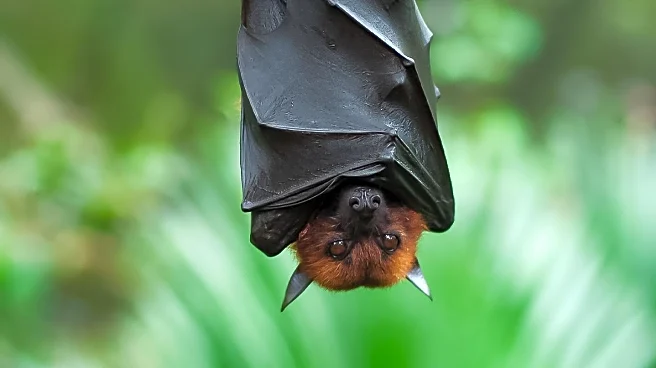What's Happening?
Scientists have identified a new coronavirus, BRZ batCoV, in Brazilian 'moustached' bats, which shares genetic similarities with SARS-CoV-2, the virus responsible for COVID-19. This discovery, reported in a study on BioRxiv, suggests that the virus may
have been circulating undetected due to limited regional viral sampling. The presence of a furin cleavage site, a feature that allows viruses to enter human cells, in BRZ batCoV supports the theory that such molecular features can evolve naturally. Researchers emphasize the importance of wildlife surveillance to monitor potential spillover events and understand coronavirus evolution.
Why It's Important?
The identification of BRZ batCoV underscores the need for enhanced monitoring of bat populations to prevent potential zoonotic spillovers. Understanding the natural origins and evolutionary pathways of coronaviruses is crucial for predicting and mitigating future pandemics. The discovery also contributes to the ongoing debate about the origins of SARS-CoV-2, providing evidence that similar viruses can arise naturally without laboratory intervention. This research highlights the global distribution of emerging pathogen risks and the importance of studying under-sampled regions like South America.
What's Next?
While there is currently no evidence that BRZ batCoV can infect humans, the study calls for increased wildlife surveillance and research into the virus's potential to cross species barriers. Scientists aim to further investigate the evolutionary mechanisms that allow such viruses to develop features like the furin cleavage site. The findings may lead to more comprehensive global efforts to monitor and understand the diversity of coronaviruses in wildlife, particularly in regions that have been historically under-sampled.
Beyond the Headlines
The discovery of BRZ batCoV highlights the complex interplay between wildlife and human health, emphasizing the need for a One Health approach that considers the interconnectedness of human, animal, and environmental health. The study also raises questions about the role of ecological changes and human activities in facilitating the emergence of new pathogens.













